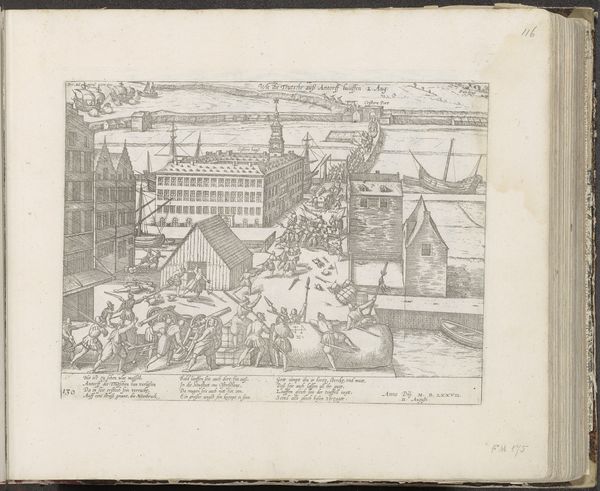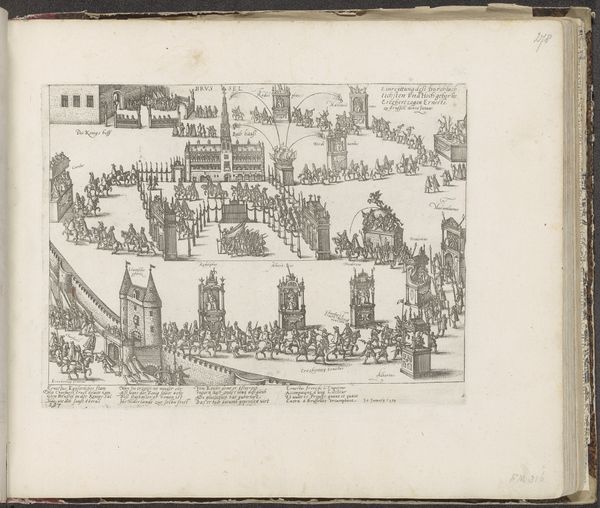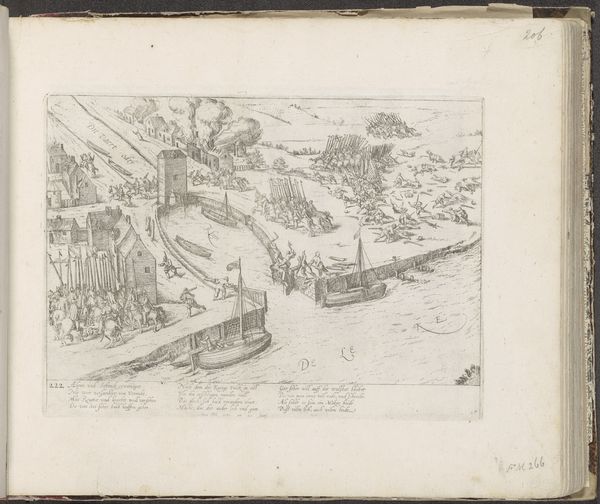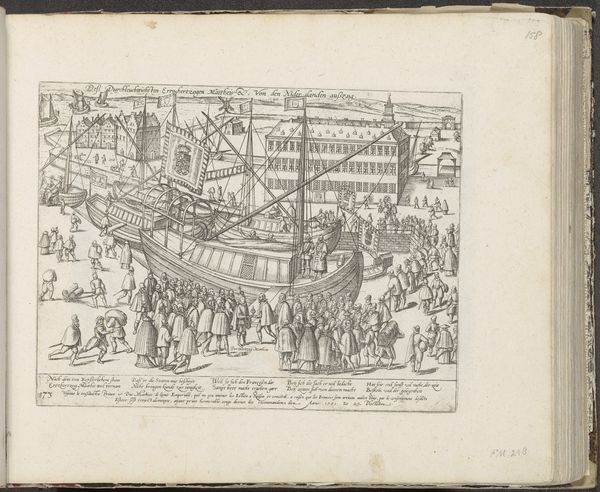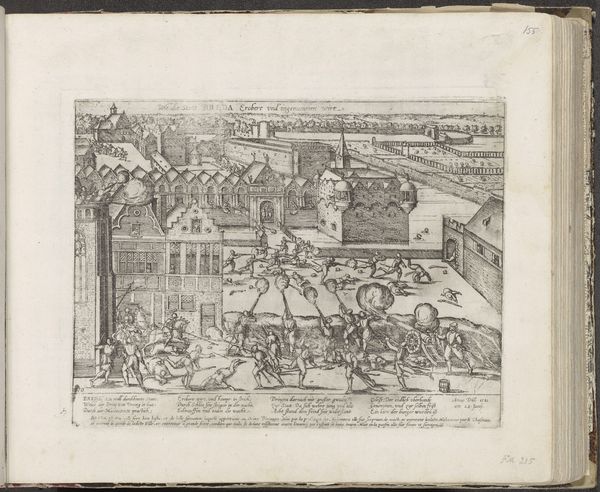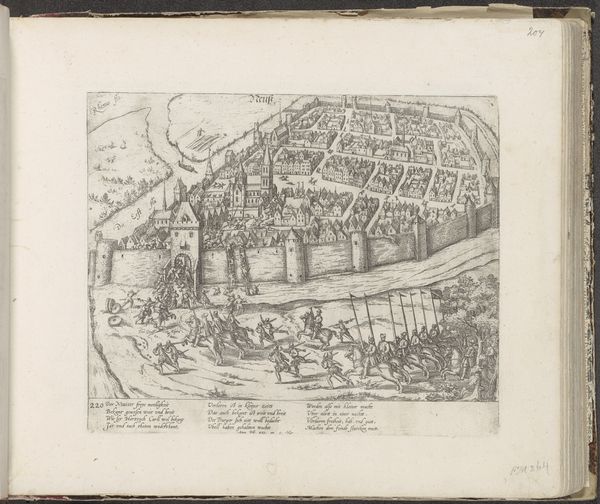
Parma geridderd in de orde van het Gulden Vlies, 1585 c. 1587 - 1591
0:00
0:00
print, engraving
#
aged paper
#
medieval
# print
#
pen sketch
#
sketch book
#
perspective
#
personal sketchbook
#
sketchwork
#
pen-ink sketch
#
pen work
#
sketchbook drawing
#
cityscape
#
history-painting
#
storyboard and sketchbook work
#
sketchbook art
#
engraving
Dimensions: height 214 mm, width 274 mm
Copyright: Rijks Museum: Open Domain
Editor: This print by Frans Hogenberg, created between 1587 and 1591, is titled "Parma geridderd in de orde van het Gulden Vlies, 1585" - or Parma knighted into the Order of the Golden Fleece. It looks like an historical event depicted with incredible detail using engraving techniques. What do you see as important about this particular representation of history? Curator: What strikes me is the staged quality, very deliberate, very political. It presents not just an event but a specific *interpretation* of power. Hogenberg is crafting a public image of Alessandro Farnese, the Duke of Parma, tying him to the prestigious Order of the Golden Fleece to legitimize his rule in the Netherlands amidst significant political turmoil. The placement of the cannons, the figures on the bridge—everything reinforces a sense of authority and controlled spectacle. What do you think this image was supposed to *do* for the Duke of Parma? Editor: So it’s not just documenting an event, it's actively shaping public perception? I guess I thought these kinds of prints were more objective records. Curator: That’s a common misconception. Prints like these were often commissioned or circulated with a specific agenda in mind. Think about the printing press's impact on the Reformation—images were key to shaping public opinion. How does understanding that shift your perception of this artwork? Editor: It makes me realize that it’s not enough to just look at the image itself. We need to consider the historical context, the political climate, and who stood to benefit from its circulation. Curator: Exactly! Art doesn't exist in a vacuum. Understanding the forces that shape its production and reception allows us to critically analyze its message and impact. Editor: That's incredibly insightful. I'll definitely approach historical prints differently from now on, keeping the social and political context in mind. Curator: Glad I could help. Thinking about art's public role and political undertones makes the experience all the more enriching.
Comments
No comments
Be the first to comment and join the conversation on the ultimate creative platform.

